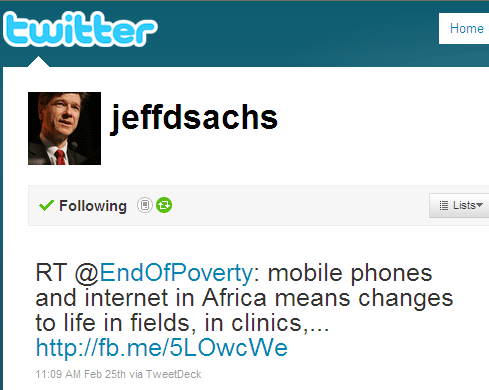Back in the 1990s, a billboard advertising executive in South Africa had a very good idea. Spinning on a merry-go-round connected to a water pump, children could generate plentiful, clean water without the time-consuming, hard work of traditional hand pumps.
At the primary schools in South Africa where the first of these merry-go-rounds were installed, kids got a place to play, their communities got free drinking water, and girls and women, who bear much of the burden of collecting water for their families, got time to attend school or pursue other activities. Billboards lining the raised water tank brought in advertising revenue to fund the pumps’ maintenance, and spread public health messages about hygiene or safe sex.
In 2000, the idea won the World Bank’s Development Marketplace award. In 2006, Laura Bush announced $16 million in funding from USAID/ PEPFAR and private foundations, with the goal to raise $45 million more to install 4,000 pumps in Africa by 2010. Jay-Z pitched in with concerts and an MTV documentary. PlayPumps announced plans to expand, first to Mozambique, Swaziland and Zambia, and then to Lesotho, Malawi, Ethiopia, Kenya, Tanzania and Uganda. The nonprofit launched a sophisticated social networking campaign, and successfully raised money for “100 Pumps in 100 Days” on World Water Day in 2007 and 2008.
Sadly, somewhere along the way, PlayPumps stopped being a smart homegrown idea and became a donor-pleasing, top-down solution that simply didn’t fit many of the target communities.
The charity WaterAid wrote a position paper on why they did not adopt the PlayPumps technology. For one, they said, PlayPumps are too expensive. At $14,000 each, they cost four times as much as traditional pump systems. The mechanism requires specialized skills to repair and so can’t be fixed with local labor, and spare parts are hard to find and expensive to replace. WaterAid also decried the system’s “reliance on child labour.” A recent critical commentary in the Guardian calculated that children would have to “play” for 27 hours every day to meet PlayPumps’ stated targets of providing 2,500 people per pump with their daily water needs.
An aid worker and engineer in Malawi documented some of these problems in a brilliant series of blog posts. His anecdotes and pictures give limited but compelling evidence that PlayPumps in his area are not being used as the inventors intended:
Each time I’ve visited a Playpump, I’ve always found the same scene: a group of women and children struggling to spin it by hand so they can draw water.
He also suggests one reason why PlayPumps might be slow to get that crucial feedback:
[A]s soon as the foreigner with a camera comes out (aka me), kids get excited. And when they get excited, they start playing. Within 5 minutes, the thing looks like a crazy success…. I’ve always figured that as soon as I leave the excitement wears off and the pump reverts back to its normal state: being spun manually by women and kids.
Does the story of PlayPumps carry a broader lesson about the aid world? Suppose the organization had charged ahead with a Twitter campaign to raise millions for THE solution to water problems in Africa, while reality kept diverging from their rosy picture. Then PlayPumps would represent the triumph of bad but photogenic solutions in a broken aid marketplace.
BUT last fall, the CEO announced instead that their inventory would be turned over to the organization Water for People, where PlayPumps would be just one option out of “a portfolio of technologies from which communities can choose.” This seems like the right outcome. We can ask why it took so long to see the flaws in the PlayPumps model. But in contrast to the official aid world, where the old failed solutions keep getting recycled across 60 years, this is real progress!
 From Aid to Equality
From Aid to Equality









